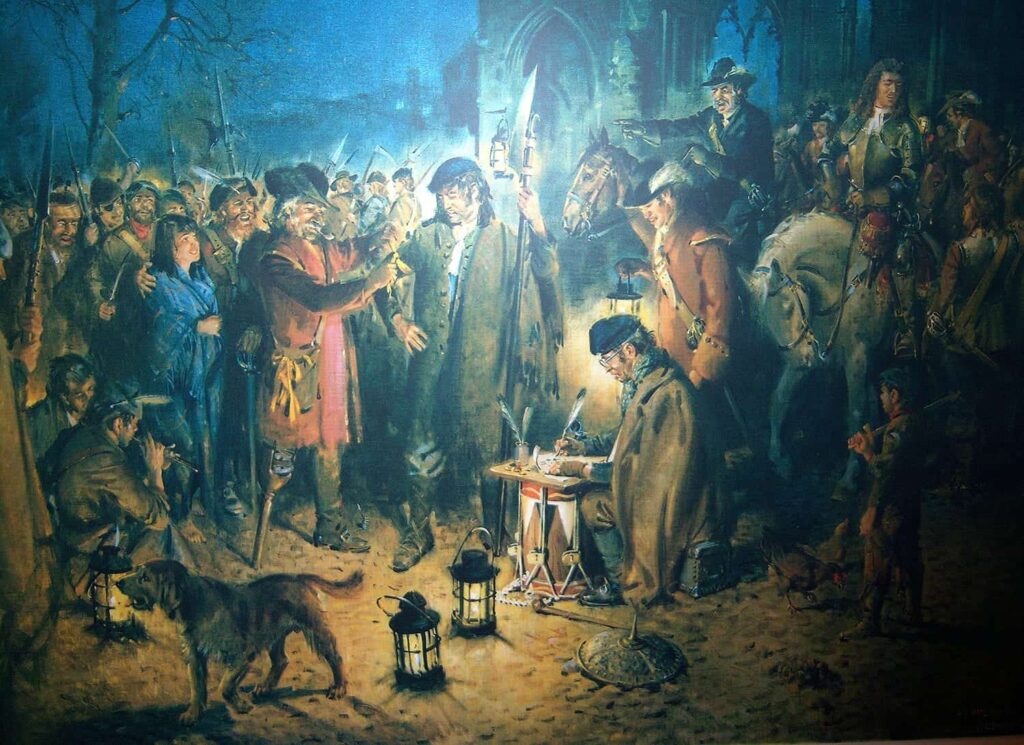
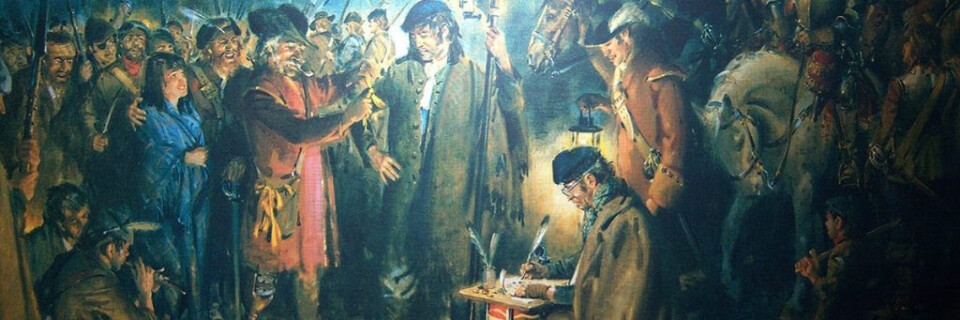
The regiment was raised to protect the city of Edinburgh at the crisis of the Glorious Revolution, as William of Orange laid claim to the crown. The Scottish government issued a commission to form a regiment of foot to David Leslie, 3rd Earl of Leven, one of William’s right-hand men and on 18th March, going through the town ‘by beat of drum’ his recruiting parties managed to raise 800 men in just a few hours. The Regiment was blooded at the Battle of Killiecrankie on July 27th of that year. From this disastrous encounter with Dundee’s Jacobite rebels, only two regiments emerged with honour, one of them Leven’s, as it was then called, after its colonel. As a result it was taken on to the permanent strength of the army.
In 1691 the regiment was in Ireland, again engaged against the Jacobites and fought with valour at, Ballymore, the siege of Athlone and the sieges of Galway and Limerick.
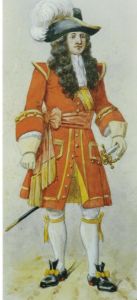
With the Jacobites defeated, the old enemy, France ,once again came to the fore and for the next five years Leven’s men were in the Low Countries building a reputation in such engagements at Steenkirke and Neerwinden. In particular, now going under the name of their new colonel, James Maitland, they made a name for themselves at the siege of Namur on 27th July 1695, when in the course of an assault, 20 officers and 500 men were killed and wounded by an exploding mine.
It is testimony to their resilience that the survivors rallied and pressed on the attack, for which the regiment was awarded its first Battle Honour.
With the resurgence of the Jacobite threat, following the death of Queen Anne, the regiment, by this stage named Shannon’s, found itself again fighting on home soil. In 1715 it defeated James’s army at Sheriffmuir. There followed a period of garrison duty in Ireland and Gibraltar, the highlight being the siege of the latter in 1727. By now the regiment’s character was well established and a roll call of the officers from 1739 reads like a list of the principal Borders families. Now, known as Rothes’ foot, the regiment was sent to garrison the West Indies, the first of many sojourns in the Caribbean. By 1745 however, it was once again fighting the French, this time as Semphill’s regiment, as it performed with conspicuous gallantry, losing a third of its men, under the Duke of Cumberland at Fontenoy.
With the same commander it was in action again the following year, but this time in Scotland, when at the battle of Culloden in April of that year it took part in quelling the last of the great Jacobite rebellions (indeed it was the only Scottish regiment to have fought against the rebels in all three insurrections).
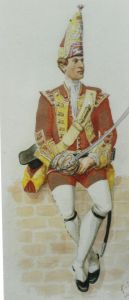
With the introduction of regimental numbering in 1751, the regiment became the 25th Foot and it was as such that it took perhaps its most famous battle honour at Minden on 1st August 1759. Here, in an allied force under Ferdinand of Brunswick, with five other British infantry regiments, the 25th marched in line against 10,000 French cavalry and broke the enemy centre. It was a remarkable feat and is still celebrated every anniversary of the battle.
Following prolonged garrison duties on Minorca from 1768 to 1780, the regiment was sent to relieve Gibraltar, and in the same year, for a number of reasons, was retitled ‘the 25th (Sussex) Regiment of Foot’.
New hostilities with Revolutionary France saw the regiment provide marine detachments for service aboard British warships in the Mediterranean, English Channel and the North Sea. The Grenadier and Light Companies were present at Admiral Howe’s great victory on the ‘Glorious First of June’, 1794.
With the regiment in Grenada fighting a French-led slave rebellion, in 1795 a second, home battalion was formed.

In August 1799 the regiment sailed from the Isle of Wight to Kent, where, at Canterbury General Abercromby was assembling a force for the invasion of the Netherlands. In October 1799 the 25th won a third battle honour at the Battle of Egmont-op-Zee, fighting in the vanguard of Sir John Moore’s brigade on the sand dunes.
In 1801 the Regiment was sent to Egypt with Sir Ralph Abercromby’s force and took part in the capture of Alexandria, thus earning, the right to bear the emblem of the Sphinx on its Colours.
The 1st battalion spent the most part of the Napoleonic Wars in the West Indies. Martinique was taken in 1809, and Guadeloupe in 1811. During this campaign the Battalion lost more men through disease than as a result of enemy action. Also during this period, in 1805, at the order of King George III, the regiment was retitled the ‘King’s Own Borderers’ and its facings changed to royal blue.
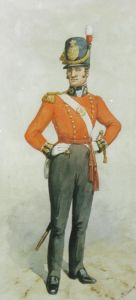
The 2nd battalion, raised in 1804, was sent in 1813 on the expedition to the Netherlands to assist in the Dutch revolt against the French. In 1814 it took part in the attack on Merxem, before being disbanded in Cork in 1816.
With the cessation of hostilities in Europe there began the period known as the ‘long peace’, lasting to the Crimean war in 1854. Once again the regiment found itself quartered in Ireland.
In 1826 the regiment was again in the West Indies and sure enough disease again took its toll. Returning to Ireland, in 1839 the 25th was sent to South Africa where it took part in the Xhosa wars. In 1842 the first battalion was in India and in 1857 back on home soil. By 1863 a newly raised second battalion had received its colours and this sailed for Ceylon and India where it remained until 1875, when it was sent to the ‘barren rocks of Aden’. It returned to England the following year. In 1888 the battalion was sent to fight the Mahdists in the Sudan. It was this battalion too which earned the battle honours for Chitral (1895) and Tirah (1897), with hard fighting in the Afghan hills.
Having been posted to Gibraltar (1858-63) and Malta (1863-64), in 1864 the first battalion was sent to Canada to suppress the Fenian rebellions.
The Regiment’s most active postings of the Victorian era however, were to Afghanistan and Burma. In the former the battalion distinguished itself in the Bazar Valley in 1878 and the Khyber Valley in 1880. In Burma, served with the Chin Lushai Expedition (1889-90).
While the regimental HQ was from 1869 in Portsmouth, in 1873 it was allocated a Depot at York, and in 1881, when territorial titles and regimental districts were introduced, it was proposed that the 25th Foot should be re-designated ‘The York Regiment (King’s Own Borderers)’. Such was the outcry that Parliament was successfully lobbied, and on 29th July 1881 ‘The King’s Own Borderers’ moved to a new Depot at Berwick-upon-Tweed Barracks. The national origins of the Regiment were further recognised in 1887 when it acquired its lasting title ‘The King’s Own Scottish Borderers’.
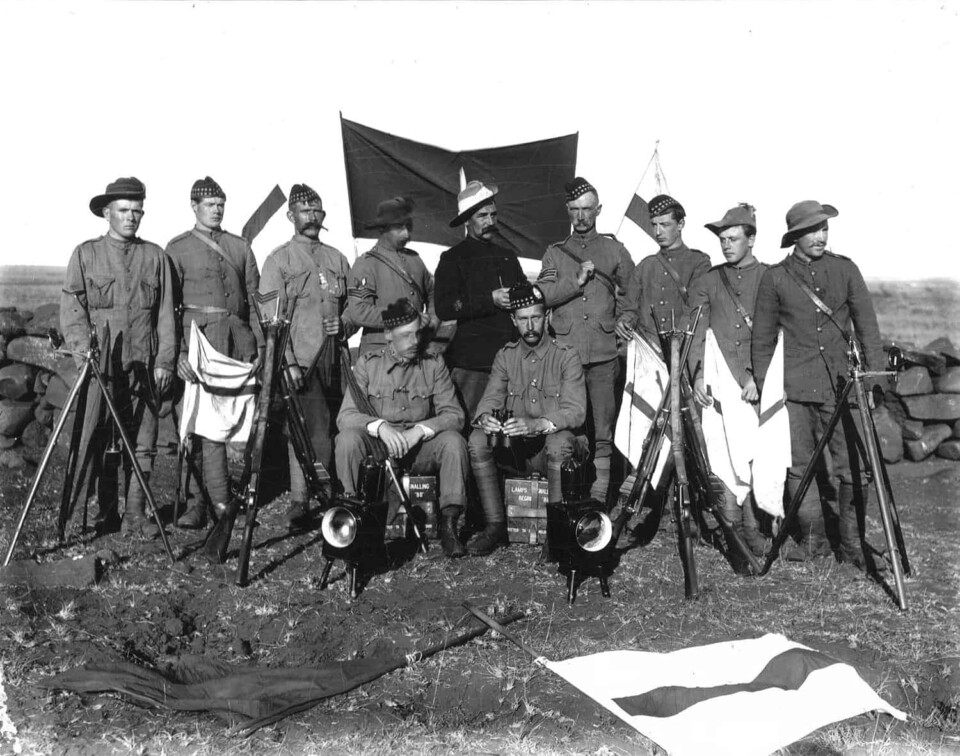
From 1900 to 1902 the 1st Battalion served in South Africa fighting the Boers. Taking part in the action at Paardeberg, it went on to fight in the Traansval and at the battle of Rustenberg in October 1900 and in May the following year at Vlakfontein and Lambrechtfontein. It was joined by the 3rd (Militia) Battalion, and Service Companies from the Volunteer Battalions. A considerable number of decorations were awarded, not least the regiment’s first VC to Lieutenant GHB Coulson.